Email, the OG of digital communication, is still the favorite gateway for cybercriminals. Scammers haven’t evolved much in their strategy, just in their tools. Here’s a plain-English rundown of the top five most dangerous email attacks, with real-world examples and a quick tips to stay safe.
1. Phishing
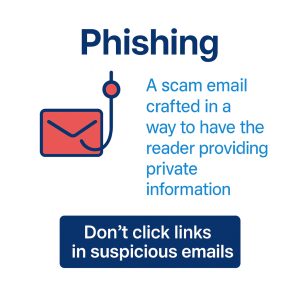
- Definition: A scam email designed to trick you into revealing sensitive information such as passwords or payment details.
- Example: An email that appears to be from Microsoft claims your account has been compromised and urges you to “verify your identity” by clicking a link to submit your current and new password.
- Why it works: It creates a sense of urgency. Your first instinct is to fix the problem immediately.
Quick Tip: Avoid clicking links in emails unless you are certain of the sender; instead, go directly to the official website.
2. Spear Phishing
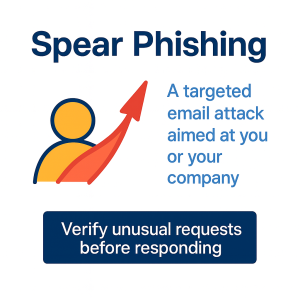
- Definition: A highly personalized phishing attack that targets a specific individual or company.
- Example: You receive an email “from your CFO,” requesting an urgent wire transfer to a trusted-sounding vendor. It even mimics your boss’s tone.
- Why it works: Familiarity makes it feel safe and urgent.
Quick Tip: When money or sensitive data is involved, always double-check via a separate channel; like a call or in-person confirmation.
3. Business Email Compromise (BEC)
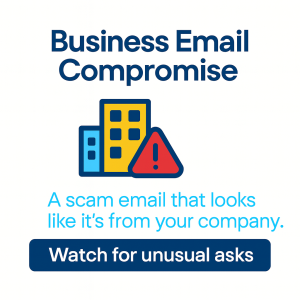
- Definition: A fraudulent email that bypasses systems by appearing to be from a trusted business account to steal money or data.
- Example: Your HR team gets an email “from the CEO” requesting all employees’ W‑2 forms. Everything looks legitimate—but it’s a scam.
- Why it works: It exploits authority, making recipients less likely to question the request.
Quick Tip: For sensitive requests—even from the “boss”—have a verification process. A simple call can save a lot of trouble.
4. Malware via Attachments or Links
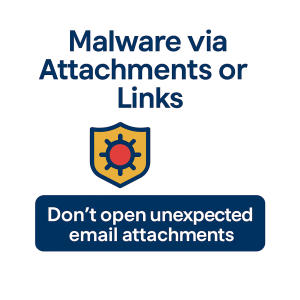
- Definition: Emails that carry harmful software—hidden in attachments or links—that infect your system.
- Example: You win a “gift card” via email and are prompted to open an attached form. Instead, it installs malware that gives attackers access.
- Why it works: It appeals to curiosity or excitement. Once opened, the damage can begin immediately.
Quick Tip: Never open attachments or click links from unexpected or unverified senders.
5. Email Spoofing
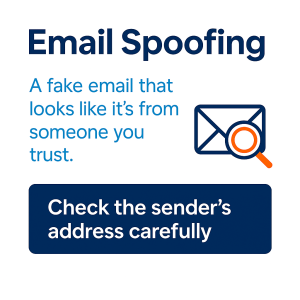
- Definition: Scammers forge a sender’s address to make an email look like it’s from someone you trust.
- Example: You get what seems to be a bank notice to confirm a transaction. The sender’s email looks almost correct—but just off by one letter.
- Why it works: We glance at sender names, not scrutinize them. A small detail easily gets overlooked.
Quick Tip: Always inspect the full sender address carefully—odd punctuation or misspellings are red flags.
Why It Matters (And How 2b1 Helps Without the Hype)
When it comes to email attacks, the smarter play isn’t just stronger tech—it’s combining smart tech with informed people.
That’s why pairing the 2b1 Care Advanced Email Security system (with its AI-powered detection of phishing, spoofing, malware, and BEC attempts) with 2b1 Care Advanced Security features (like endpoint protection, backup, and patch management) and 2b1 Care’s Cybersecurity Training—which includes phishing simulations and compliance tracking—creates a layered defense that drastically lowers the risk of falling for these scams.

